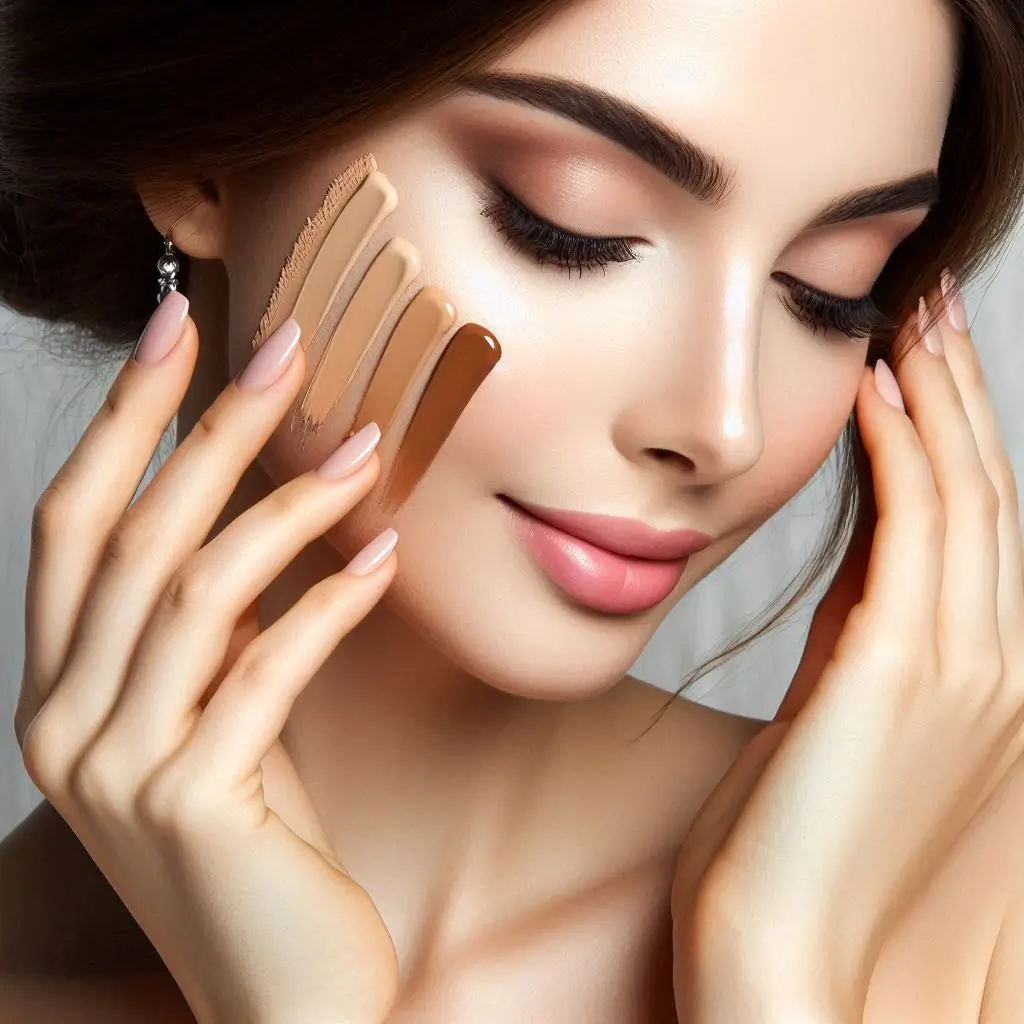Choosing the right foundation shade can be a game-changer for your makeup routine. With the right shade, your skin will look flawless and natural, giving you the confidence to tackle any day. Here’s a comprehensive guide to help you find the perfect foundation shade that complements your skin tone.
Understanding Your Skin Tone
Before selecting a foundation shade, it’s essential to understand your skin tone. Skin tones generally fall into three categories: warm, cool, and neutral. Identifying which category you belong to will significantly narrow down your options.
1. Warm Skin Tones: If you have warm undertones, your skin will have a golden or yellow hue. People with warm skin tones tend to tan easily and might notice a greenish tint in their veins.
2. Cool Skin Tones: Cool undertones are characterized by a pink or blue hue. Those with cool skin tones often burn quickly in the sun and might see a bluish tint in their veins.
3. Neutral Skin Tones: If you find that you don’t fit perfectly into the warm or cool categories, you might have a neutral undertone. Neutral tones have a balance of both warm and cool hues.
Finding Your Foundation Shade
Once you know your undertone, it’s time to choose the right foundation shade. Here’s a step-by-step process to help you:
1. Test Multiple Shades: When shopping for foundation, it’s important to test several shades. Apply a few options along your jawline and neck to see which shade blends seamlessly with your skin. Avoid testing on your wrist or hand, as these areas might not match your face’s undertone.
2. Consider the Formula: Foundations come in various formulas such as liquid, powder, cream, and stick. Choose a formula that suits your skin type. For instance, if you have oily skin, a matte foundation might work best. For dry skin, a hydrating foundation could be more appropriate.
3. Check the Shade in Natural Light: After testing foundation shades, check how they look in natural light. Artificial lighting can alter the appearance of the foundation, making it crucial to assess the shade in daylight.
Factors Affecting Foundation Shade

Several factors can influence your choice of foundation shade:
1. Seasonal Changes: Your skin tone might vary with the seasons. For example, you might be darker in the summer due to tanning and lighter in the winter. It’s a good idea to have two shades of foundation to accommodate these changes.
2. Skin Condition: Skin conditions like redness, hyperpigmentation, or sallowness can affect how a foundation shade appears on your skin. Choose a shade that not only matches your skin tone but also neutralizes any discoloration.
3. Application Method: How you apply your foundation can also impact the final look. Use a makeup sponge, brush, or your fingers to apply the foundation and ensure it blends well with your skin.
Additional Tips for a Flawless Foundation Application
1. Prep Your Skin: Before applying foundation, make sure your skin is well-prepped. Cleanse, moisturize, and use a primer to create a smooth base. This will help the foundation to apply evenly and last longer.
2. Blend Well: Blending is key to achieving a natural look. Use a makeup sponge or brush to blend the foundation into your skin, making sure to extend it to your neck and ears for a seamless finish.
3. Check for Oxidation: Some foundations may oxidize or change color after application. Monitor the foundation throughout the day to ensure it remains true to your skin tone.
4. Use the Right Tools: Investing in the best makeup kit with high-quality brushes and tools can make a significant difference in the application process. Tools like foundation brushes, sponges, and blending brushes can help achieve a flawless finish.
Incorporating Other Makeup Products
While choosing the right foundation shade is crucial, other makeup products also play a significant role in creating a cohesive look. For example, transfer proof lipstick can complement your foundation by providing a long-lasting color that enhances your overall appearance.
Make sure your foundation shade works well with other products you use, including concealer, blush, and highlighter. These products should harmonize with your foundation to create a balanced and polished look.
Final Thoughts
Selecting the perfect foundation shade involves understanding your skin tone, testing multiple shades, and considering various factors such as seasonal changes and skin condition. With these tips, you’ll be able to find a foundation shade that enhances your natural beauty and gives you a flawless finish.
Remember, the right foundation is not just about matching your skin tone but also about finding a formula that suits your skin type and blending it seamlessly. Investing time in choosing the right shade and using quality makeup tools will ensure your foundation looks flawless and lasts throughout the day.
So, next time you’re shopping for foundation, use these tips to guide your choice and enjoy a radiant, natural-looking complexion that complements your unique skin tone.


